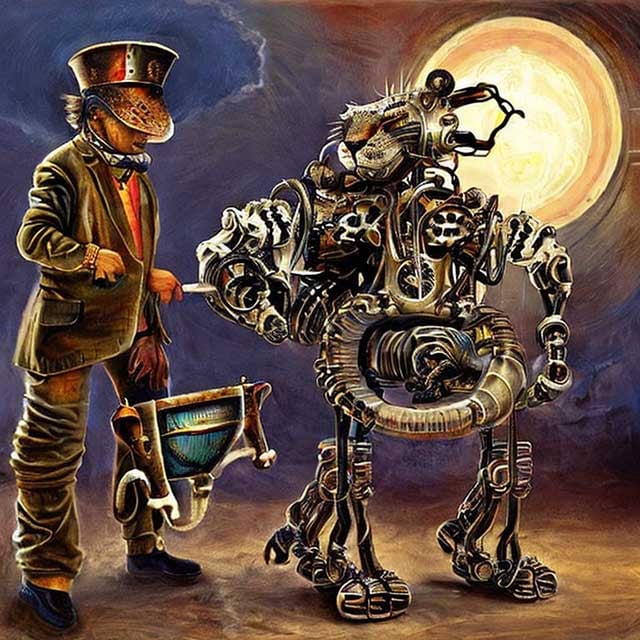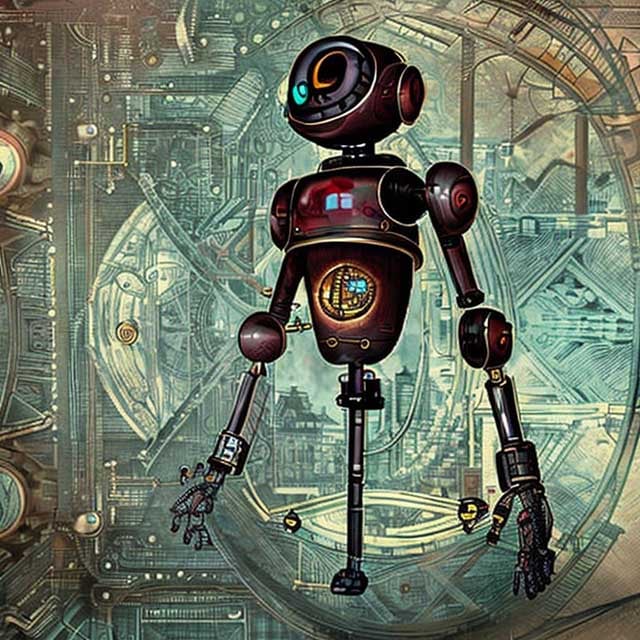ChatGPT: How a Neural Net is Changing the Way We Write and Communicate
- Home
- ChatGPT: How a Neural Net is Changing the Way We Write and Communicate
How ChatGPT Uses Neural Networks to Predict Text and Reveal New Insights into Human Language
In the world of artificial intelligence, one of the most impressive achievements of recent years has been the development of ChatGPT, a computer program that can write sentences and paragraphs in a way that is remarkably similar to how humans write. In this article, we will explore how ChatGPT works, how it uses neural networks to predict text, and what new insights it has provided into the structure of human language.
Understanding Neural Networks
Neural networks are simplified models of how brains work. They are made up of a network of "neurons" that can recognise patterns and perform tasks. For example, a neural network could be trained to recognise objects in images or to predict the next word in a sentence.
To make predictions, a neural network must be trained on a large amount of data. In the case of ChatGPT, this data is a huge sample of human-written text. By analysing this text, the neural network learns to "guess" what words should come next in a sentence or paragraph.
The Components of ChatGPT
The neural network that powers ChatGPT is made up of two main parts: an "embedding module" and a "transformer." The embedding module takes in words and turns them into numbers, which the transformer then uses to generate predictions about what words should come next.
The transformer is made up of attention blocks, each of which has attention heads that recombine chunks of the embedding vector. The transformer outputs a new embedding vector, which is then decoded to produce a list of probabilities for the next token. ChatGPT always reads the whole sequence of tokens that come before it, meaning that it has a feedback loop.
Training ChatGPT

Training a neural network like ChatGPT involves a lot of work. The network needs to be shown lots of examples of text, like books, news articles, or even social media posts. These examples are used to help the network learn about language and the patterns that people use when they write.
The network doesn't just look at these examples and learn right away, though. It needs to be adjusted over time so that it can get better and better at predicting what words should come next in a sentence. This is done by changing the weights of the neurons that make up the network.
A "loss function" is used to measure how well the network is doing at reproducing the examples it has been shown. The goal is to minimise the loss function, which means that the network is doing a good job of predicting what comes next in a sentence.
To minimise the loss function, the network is trained using a method called "steepest descent." This involves making small changes to the weights of the neurons in the network until the loss function is minimised. This process is repeated over and over again, with the network being shown new examples and adjusting the weights of the neurons each time.
Over time, the network becomes better and better at predicting what words should come next in a sentence. This is how ChatGPT and other neural networks are able to generate text that sounds like it was written by a person.
The training process for ChatGPT is computationally expensive, requiring millions of examples and a large number of weights (175 billion). However, the results are better when the model is trained on more data.
The Success of ChatGPT
ChatGPT is really good at writing sentences that sound like they were written by a person! It learned this by looking at a lot of writing made by humans, like stories and social media posts. By doing this, ChatGPT was able to figure out the way that sentences are put together. This is why ChatGPT can create sentences that sound like they were written by a person!
While ChatGPT is not perfect, it has opened up new avenues for research into the nature of language and thought. For example, the transformer architecture of neural nets is particularly effective in learning the nested-tree-like syntactic structure of human languages. It has also revealed that human language is simpler and more law-like in structure than previously thought.
The Limitations of ChatGPT
While ChatGPT is an impressive achievement, it is still limited in some ways. For example, it may have trouble generating sentences that make sense when taken as a whole, because it is not very good at understanding the context of a sentence or paragraph.
In addition, ChatGPT is limited by the fact that it is sequential. This means that it generates text one word at a time, which can lead to errors or awkward phrasing.
The Future of ChatGPT

Despite its limitations, ChatGPT is a valuable tool for researchers and developers. It has provided new insights into the structure of human language and has opened up new avenues for research into artificial intelligence and natural language processing.
As researchers continue to explore the potential of neural networks and natural language processing, it is likely that ChatGPT will be refined and improved. One of the areas of focus is developing more efficient training methods that require less data and computational power.
Another area of research is in the development of more advanced neural network architectures that can handle more complex tasks. For example, researchers are exploring the use of recurrent neural networks, which are better suited for tasks that involve predicting sequences of data.
There is also the possibility of incorporating outside tools, such as Wolfram|Alpha, which could help ChatGPT generate text that is more accurate and relevant to the context.
In the future, it is possible that neural networks like ChatGPT will become even more sophisticated and capable. There is even the possibility that they could be used to generate text that corresponds to correct computations, opening up new possibilities for the application of natural language processing in fields such as medicine, law, and finance.
Conclusion
In conclusion, ChatGPT is a powerful tool for exploring the structure of human language and the potential of artificial intelligence. Analysing a large sample of human-written text has revealed new insights into the nested-tree-like syntactic structure of human languages, and it has shown that human language is simpler and more law-like in structure than previously thought.
While it is not perfect, ChatGPT has opened up new avenues for research and development in natural language processing and artificial intelligence. As researchers continue to explore the potential of neural networks and other technologies, it is likely that ChatGPT and other similar programs will continue to evolve and improve, unlocking new possibilities for the application of these technologies in a variety of fields.
FAQs about ChatGPT and Neural Networks:
Q: What is ChatGPT? A: ChatGPT is a computer program that can write sentences and paragraphs, just like a person can. It uses a type of computer program called a "neural network" to do this.
Q: What is a neural network? A: A neural network is a simplified model of how brains work. It is made up of a network of "neurons" that can recognise patterns and perform tasks. For example, a neural network could be trained to recognise objects in images or to predict the next word in a sentence.
Q: How does ChatGPT work? A: ChatGPT works by looking at a lot of writing made by humans and using this information to "guess" what words should come next in a sentence or paragraph. To do this, it uses a neural network that has been trained on a huge sample of human-written text.
Q: How is ChatGPT trained? A: Training ChatGPT involves showing it lots of examples and adjusting the weights of the neurons so that the net can reproduce the examples. The training process is guided by a loss function that measures how well the net is doing at reproducing the examples.
Q: What are the limitations of ChatGPT? A: While ChatGPT is very good at generating sentences that sound like they were written by a person, it is not very good at understanding the context of a sentence or paragraph. This means that it may have trouble generating sentences that make sense when taken as a whole.
Q: How might ChatGPT be used in the future? A: ChatGPT and other neural networks like it could be used in a variety of fields in the future, including medicine, law, marketing, and finance. For example, they could be used to generate text that corresponds to correct computations, opening up new possibilities for the application of natural language processing.
References
- Brown, T. B., Mann, B., Ryder, N., Subbiah, M., Kaplan, J., Dhariwal, P., ... & Amodei, D. (2020). Language models are few-shot learners. arXiv preprint arXiv:2005.14165.
- Radford, A., Wu, J., Child, R., Luan, D., Amodei, D., & Sutskever, I. (2019). Language models are unsupervised multitask learners. OpenAI Blog, 1(8).
- Vaswani, A., Shazeer, N., Parmar, N., Uszkoreit, J., Jones, L., Gomez, A. N., ... & Polosukhin, I. (2017). Attention is all you need. In Advances in neural information processing systems (pp. 5998-6008).
- LeCun, Y., Bengio, Y., & Hinton, G. (2015). Deep learning. Nature, 521(7553), 436-444.
- Goodfellow, I., Bengio, Y., & Courville, A. (2016). Deep learning (Vol. 1). MIT press.
- Wu, Y., Schuster, M., Chen, Z., Le, Q. V., Norouzi, M., Macherey, W., ... & Dean, J. (2016). Google's neural machine translation system: Bridging the gap between human and machine translation. arXiv preprint arXiv:1609.08144.
- Mordvintsev, A., Olah, C., & Tyka, M. (2015). Inceptionism: Going deeper into neural networks. Google Research Blog, 17(6), 1-10.
- Karpathy, A. (2015). The unreasonable effectiveness of recurrent neural networks. Andrej Karpathy Blog, 1(7), 1-16.
- Mikolov, T., Chen, K., Corrado, G., & Dean, J. (2013). Efficient estimation of word representations in vector space. arXiv preprint arXiv:1301.3781.
- Goldberg, Y. (2016). A primer on neural network models for natural language processing. Journal of Artificial Intelligence Research, 57, 345-420.
